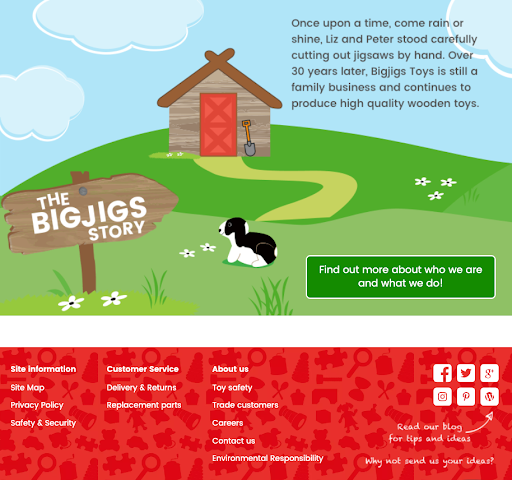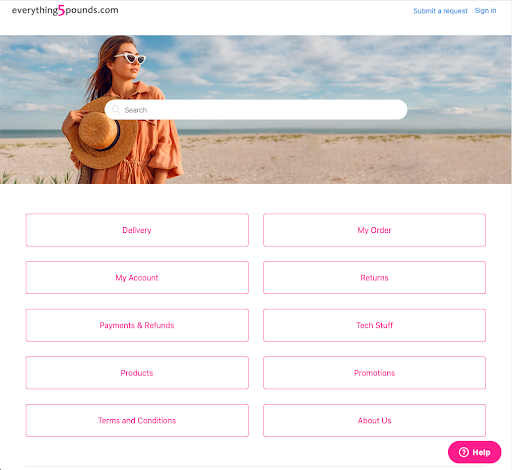The concept of belief-driven buying is nothing new. For years, we’ve seen customers voting with their wallets and showing their loyalty to brands that reflect their own values. The pandemic has only amplified this, with Edelman’s 2020 special report showing that 1 in 3 customers’ loyalty to a brand is built on the strongest level of trust. And if there’s one thing that we know about trust, it’s that it has to be earned.
Here are 5 ways that you can build brand trust and increase customer loyalty.
1. Display Clear Policies
Only 21% of consumers trust established brands to keep their personal information secure. While GDPR requirements made it mandatory for businesses to have clear privacy policies, it’s worth giving it a once over and asking yourself the questions:
⬢ Is our privacy policy clearly linked on the website?
⬢ Is it free of jargon, and easy for someone with little/no technical knowledge to understand?
⬢ Does it answer any possible questions that a customer might have about how their data is used?
This need for clarity extends to all company policies. Your delivery and returns policy need to be crystal clear and easily accessible at all stages of the customer journey. And while your mission statement should also have a prominent place so that it can be seen, it’s just as important for customers to feel your company values while navigating your store. A great example of this is from meal kit retailer Gousto, who has a page on their blog dedicated to its sustainability pledge.
2. Encourage Customer Input
Using social proof is one of the most effective ways to build trust in your brand. 88% of consumers trust user reviews as much as personal recommendations. Incorporating reviews into your online store can help to mitigate your customers’ fears and build a relationship with your brand. However, you have to take the good with the bad, here. By not hiding negative reviews, but instead dealing with them head-on, you further prove to customers that your brand is trustworthy.
Another fantastic way to give your customers a voice and earn their trust is by providing an outlet for them to share their ideas. Whether it’s feedback on how customer service can be improved or ideas for products themselves, there’s real value to be gained from the opinions of your customers. Wooden toy retailer, BigJigs Toys encourages customers to share their ideas via the company’s social channels.
3. Be Accessible
Nobody should have to go to great lengths to find out how to contact a company. Nor should they need to explain their situation to multiple customer service agents to get the answer to their questions. It goes without saying that brands need to be responsive and available when customers come to them. But accessibility isn’t about being available 24/7 (something that isn’t realistic for even the biggest of brands!) It’s about providing reassurance to customers that you acknowledge their request for help and will get to the bottom of their issue, whatever it may be.
If it could take 2-3 business days to get the answer to a customer’s question, tell them! Great service is about making customers feel valued. When they feel valued, they are more likely to stay loyal to your business.
It’s also vital to give customers a clear pathway to the information they are looking for – be that a live chat function, offering a direct phone line to your business, or a comprehensive FAQ section on your online store. Fashion retailer Everything5Pounds is a good example of a brand that has made it easy for customers to get answers to their questions by breaking its help centre into clear categories.
4. Care!
The height of the pandemic had countless effects on how business was done, but one of the most notable was how it brought out the tender side of brands. And those are the brands that shoppers remember. 71% of consumers agree that if they perceive a brand to be putting profit over people, they will lose trust in that brand forever. Channeling your human side and showing that you genuinely care about your customers is unrivalled as far as building trust goes. This doesn’t have to come in the form of massive charitable donations, either. No matter what size your business is, there are always ways to show that you care.
A great example of this came from Vision Direct, who released a series of posts during the pandemic sharing helpful safety tips for contact lens wearers; including essential hygiene tips, ways to tell the difference between Covid-19 and hayfever, how to make a homemade mask, etc.
5. Always Be Consistent
So here’s the kicker – none of the approaches we’ve mentioned here are going to build brand trust if there isn’t any consistency to back them up. In fact, you’re likely to experience the opposite effect. Take the rise of greenwashing amongst brands in the last few years – brands trying to cash in on faux-sustainability have resulted in reputational damage, bad PR, and loss of formerly loyal customers.
Customers are savvy and talk is cheap. There’s no point in taking customer suggestions if they are going straight into a virtual shredder. Similarly, displaying a beautifully designed matrix of your delivery and returns policies is pointless if 80% of the time you can’t guarantee that orders will arrive within the timeframes given.
Simply put, if you want to gain trust, your brand needs to be trustworthy. And while building trust amongst customers is undoubtedly a long game, it is also what keeps them with your brand for the long haul.

AUTHOR
Michelle McSweeney Content Marketer
Scurri is a complete delivery management platform that powers ordering, shipping and delivery. Get in touch today if you want to learn more about growing your business with Scurri.




